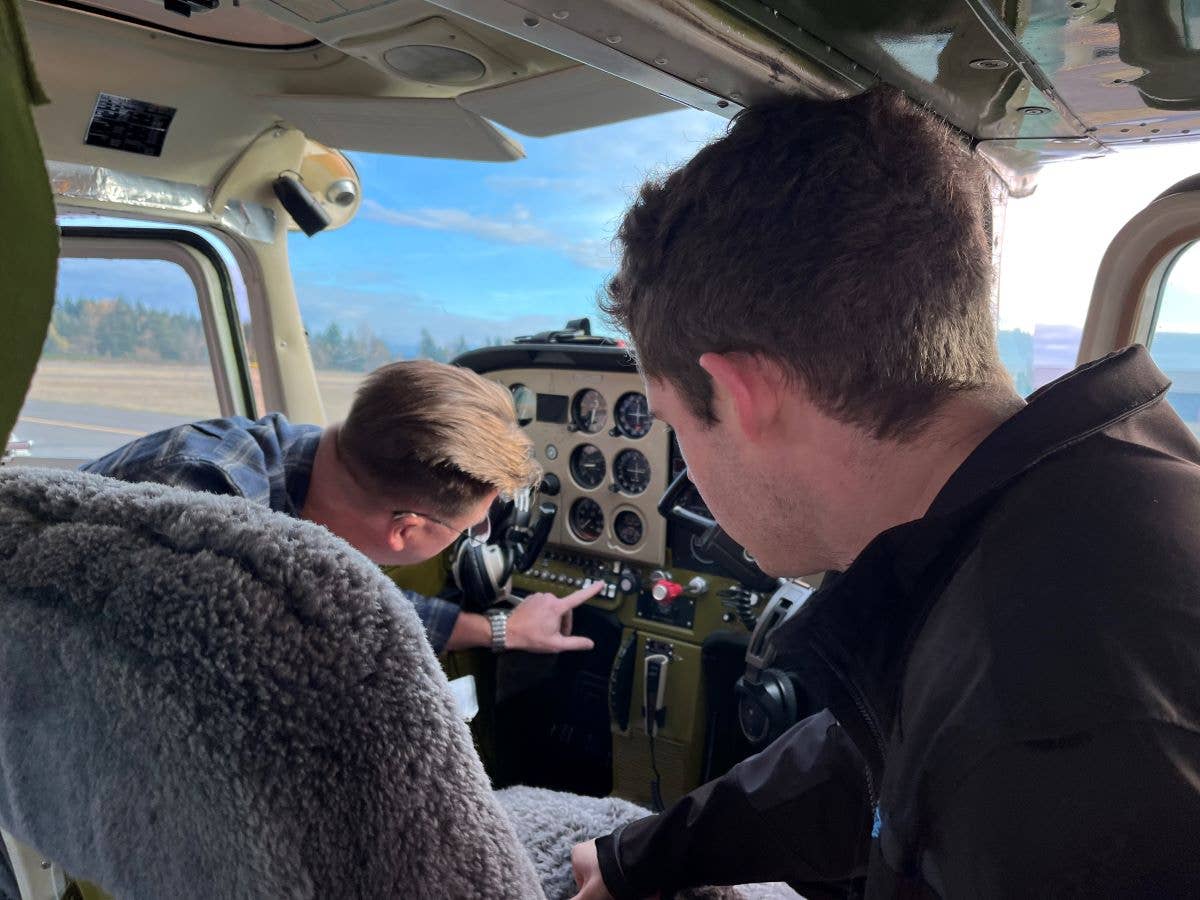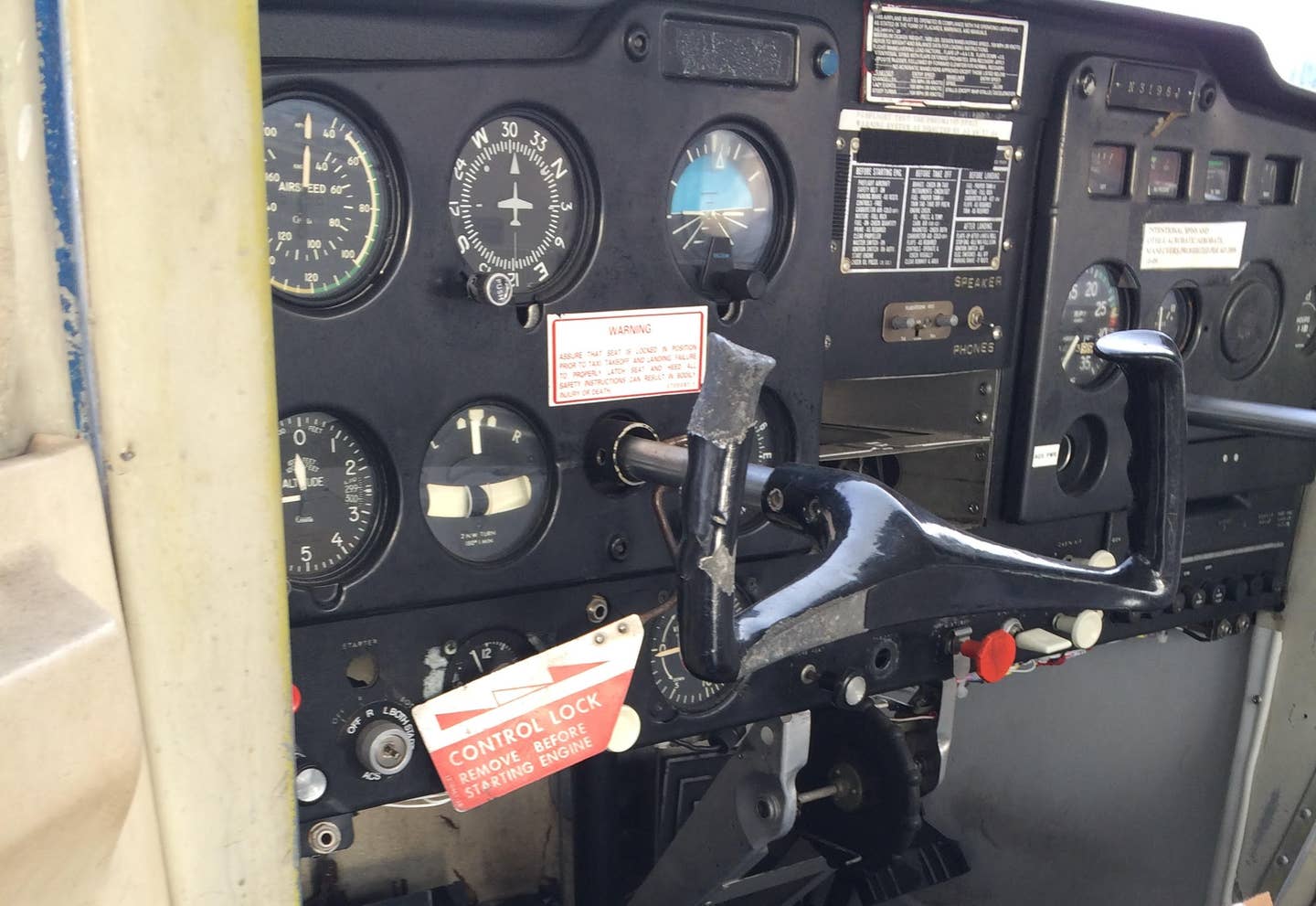Mistakes Are All a Part of Learning
Here is a rundown of the errors your CFI expects you to make.

Learning to fly is rife with opportunities to make mistakes and learn from them. Your flight instructor’s job is to make sure the mistakes don’t bend the aircraft or you. [Courtesy: Meg Godlewski]
You have probably heard the saying "failure is a key to success." That's a simple way of saying that you will learn more from your mistakes than from your successes.
Learning to fly is rife with opportunities to make mistakes and learn from them. Your flight instructor’s job is to make sure the mistakes don't bend the aircraft or you.
Cultural Bias
In some cultures it is considered insulting to the teacher if the learner does not understand something. They will say they understand when they do not. This often results in unfortunate situations, so please, please, please, if you do not understand something or you are unsure, let your CFI know. A good CFI will break down the process to see where you got lost.
Sidenote to CFIs: Repeating something louder and slower does not help someone learn. All it does is signal to the learner that you are getting frustrated with them.
- READ MORE: Always Remember to Taxi with Care
Self-Imposed Pressure
In my more than 20 years of flight instruction, I have found that people who are successful in other aspects of their life, such as their career or school, can get very upset when they struggle or make a mistake in the airplane. Please understand that aviation is not a "pay-your-fee, get-your-B" activity. As far as the translation of career success into the cockpit, if your career requires significant hand-eye coordination and multitasking—such as operating heavy machinery—there may be some positive transference. If the self-reported success is defined by a fat paycheck or owning a chain of businesses, it might be more difficult. Be gentle with yourself, especially if you are an older learner, because it has probably been awhile since you learned a new skill. Rejoice in the learning process.
Also, if you become frustrated, please don’t take it out on your instructor, and instructors, please choose your learners carefully. Most CFIs get to a level of experience where they realize after a few minutes they are not a good fit for a particular learner. Saying “I am not the right instructor for you” solves this problem.
Forgetting the Checklist
Instructors can address this by modeling good checklist use during all facets of flight. As learners tend to emulate their instructors, if you encounter a learner or pilot who tosses the checklist in the back seat after takeoff, there's a good chance they learned it from their CFI.
Steering with the Yoke on the Ground
This is the classic beginning pilot move for the learners who already know how to drive. It's the Law of Primacy in action. This is why many CFIs teach taxing the first time by having the learners either sit on their hands or instruct them to keep arms folded on their chest.
Riding the Brakes During Taxi
Taxing is about energy management. It's often helpful for the CFI to handle the energy for the first part of the taxi lesson to demonstrate what it takes to get the aircraft moving.
Failure to Get a Preflight Weather Briefing
Because you can drive in rain and fog, and airliners takeoff in rain and fog, some learners are surprised to find primary flight lessons are VFR dependent and require certain visibility and cloud clearance requirements. They may show up at the airport when the visibility is zero-zero.
One of the first ground lessons that should be taught is how to access a weather briefing and interpret it. The weather minimum for flights away from the airport, as well as those that are better suited for staying in pattern, are discussed.
Fumbled Radio Calls
Everybody stumbles on the radio at first. Evvvvvverybody. Knowing what to say, when to say it, and who to say it to can be a challenge. Talking on the radio is a form of public speaking, and some people are terrified of it. It takes practice, but no one has ever been physically hurt from stumbling on the radio.
Bounce Landings
Come in too fast or flair too high and you will bounce the landing. The first bounce is often followed by the first go-around. Learning usually takes place quickly.
Trying to Stretch the Glide with Back Pressure
This is a mistake that needs to be corrected immediately. Many CFIs take their learners up to a safe altitude and have them put the aircraft into the landing configuration and try to "stretch the glide," which usually results in a power-off stall. These accidental stalls can be frightening, so the CFI should brief the learner about what is going to happen and how to recover from it.
Poor Rudder Use
Many learners over-control the aircraft with the yoke or stick because they haven't been introduced to the rudder. One way to teach rudder use is to trim the aircraft for level flight and have the learner fly a rectangular pattern just using the rudders. The CFI may want to demonstrate a skid just so the learner feels and sees what it looks like.
Failure to Study the Syllabus
You will get more out of your flight lessons if you study the material that supports the lesson. When a learner doesn't do the required studying, whines about having to read, or calls it boring, it's a pretty good indication they are not taking their flight training seriously. As long as the learner understands that failure to study will slow their progress toward obtaining a pilot certificate, they can stretch it out as long as they want. The CFI will still get the hours.
Thinking You Have Mastered a Maneuver in One Lesson
You will learn a maneuver or task during one lesson then practice it in subsequent lessons. When you get close to solo, you may spend the entire hour in the pattern.
Repetition is the key to mastery. You will be practicing maneuvers over and over again. Refer to the Airman Certification Standards to determine if you have reached minimum acceptable levels of performance.
Failing to Use Reference Materials
If you have a question about a certificate requirements or regulations on how to log time, etc., look it up in an FAA-approved source, such as the Federal Aviation Regulations/Aeronautical Information Manual (FARAIM) instead of posting a question to social media or relying on "a guy you heard from."
This is particularly true for the CFIs. We’re supposed to know where and how to look things up and teach that to the learners. Warn your clients to never rely on "my instructor told me," because things can get lost in translation, such as the learner who insisted her CFI told her to always take off with the wind at her back.
- READ MORE: Never Let Them See You Sweat as a CFI
Trying to Force the Solo
There are learners who read stories online or hear from other pilots who claim to solo in six hours. I know they exist. I have met them. I also know a few of them learned to fly in the 1940s in a J-3 Cub or sitting on their father's lap in the family airplane.
Solo takes as long as it takes, and there are 15 things you need to know how to do (and do consistently) before we cut you loose in the pattern. Check FAR 61.87 for details.
We Expect Mistakes
Unless you do something especially foolish—like arguing when you are told to go around—it is highly unlikely your instructor will become cross with you for making a mistake. That's how you learn.
That's not to say we don't become frustrated when we've gone over the same topic or maneuver multiple times. In those situations, that's when the CFI needs to figure out a better way to teach it or suggest a change of instructor because we are just not getting through. The learning process is about the learner's needs, not the CFI's.

Subscribe to Our Newsletter
Get the latest FLYING stories delivered directly to your inbox






